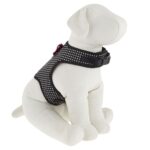Understanding volume measurements is crucial in various aspects of life, from cooking and baking to medicine and manufacturing. The litre, a metric unit of volume, is widely used around the world. This article delves into the specifics of a litre, exploring its relationship to other units of measurement and providing practical examples. We aim to answer the question “how much is 1 litre?” in a comprehensive and easy-to-understand manner.
Understanding the Litre
The litre (L) is a unit of volume in the metric system. It’s defined as the volume of a cube that is 10 centimeters on each side. This makes it a convenient unit for measuring liquids and the capacity of containers.
Litre vs. Other Units
To truly grasp how much a litre is, it’s helpful to compare it to other common units of volume:
- Millilitres (mL): There are 1000 millilitres in 1 litre. Thus, 1 mL is 1/1000th of a litre.
- Cubic Centimetres (cm³): 1 litre is equal to 1000 cubic centimetres. Therefore, 1 mL is equivalent to 1 cm³.
- Gallons (gal): 1 litre is approximately equal to 0.264 US gallons or 0.220 imperial gallons.
- Quarts (qt): 1 litre is approximately equal to 1.057 US quarts or 0.880 imperial quarts.
- Pints (pt): 1 litre is approximately equal to 2.113 US pints or 1.760 imperial pints.
- Fluid Ounces (fl oz): 1 litre is approximately equal to 33.814 US fluid ounces or 35.195 imperial fluid ounces.
Measuring cups with different volumes, including a liter
Practical Examples of 1 Litre
Visualizing a litre in everyday contexts can make the concept more concrete:
- Water Bottle: A standard large-sized water bottle often contains 1 litre of water.
- Milk Carton: Many milk cartons are sold in 1-litre sizes.
- Cooking: Recipes often call for ingredients measured in litres or millilitres, such as 1 litre of broth or 250 mL of cream.
- Car Engine Oil: Engine oil is commonly sold in 1-litre bottles for easy measurement and use.
How to Convert to and From Litres
Converting between litres and other units of volume is straightforward using the conversion factors mentioned earlier. Here are a few examples:
- Millilitres to Litres: To convert millilitres to litres, divide by 1000. For example, 500 mL is equal to 0.5 litres.
- Gallons to Litres: To convert US gallons to litres, multiply by 3.785. For example, 1 gallon is approximately 3.785 litres.
- Litres to Gallons: To convert litres to US gallons, divide by 3.785. For example, 5 litres is approximately 1.32 gallons.
Understanding these conversions enables you to work with various units of measurement seamlessly.
Why is Understanding Litres Important?
Having a solid grasp of what a litre represents and how it relates to other units is valuable in numerous situations:
- Cooking and Baking: Following recipes accurately often requires precise volume measurements.
- Healthcare: Administering medications and understanding fluid intake are critical in healthcare settings.
- Science: Conducting experiments and analyzing results rely on accurate volume measurements.
- Travel: Different countries use different units of measurement, so understanding conversions is helpful when traveling.
- Shopping: Knowing how products are measured allows for better price comparisons and informed purchasing decisions.
Conclusion
The litre is a fundamental unit of volume in the metric system, playing a vital role in everyday activities and various professional fields. By understanding its definition, its relationship to other units, and practical examples, you can confidently work with volume measurements and apply this knowledge in a wide range of contexts. Whether you are cooking, traveling, or working in a scientific field, a clear understanding of “how much is 1 litre?” will undoubtedly prove beneficial.
